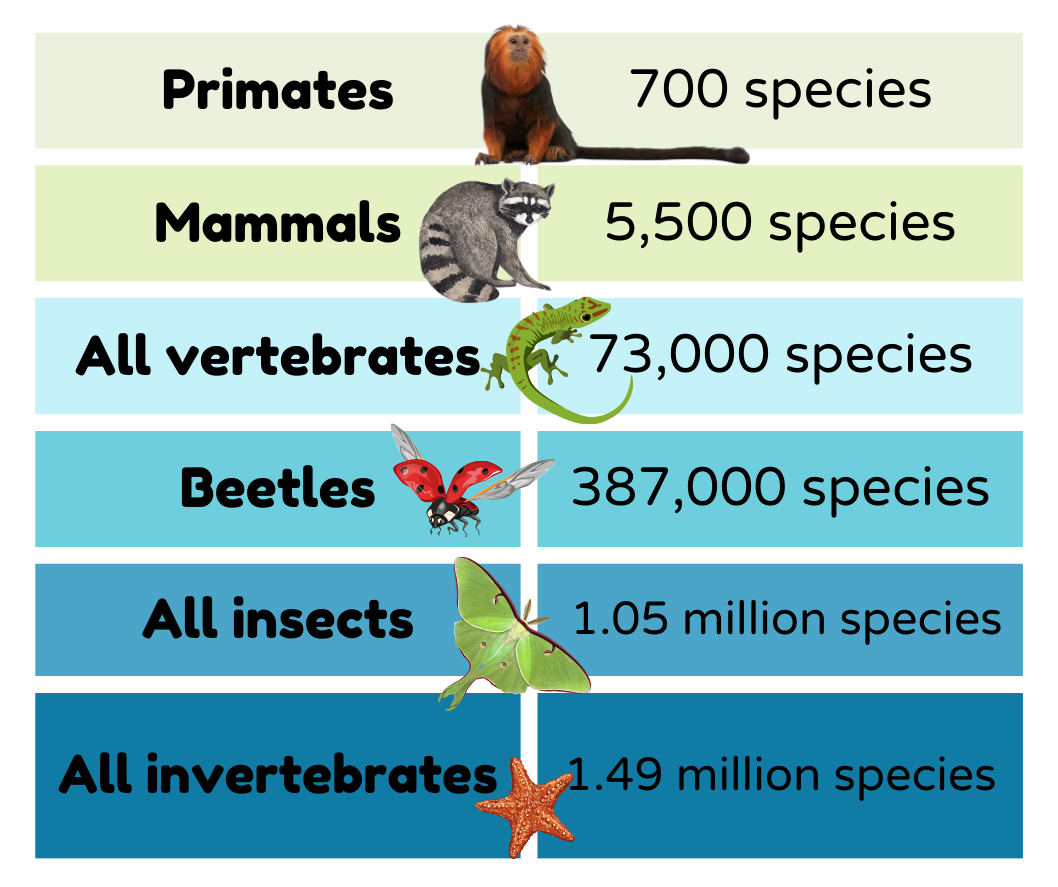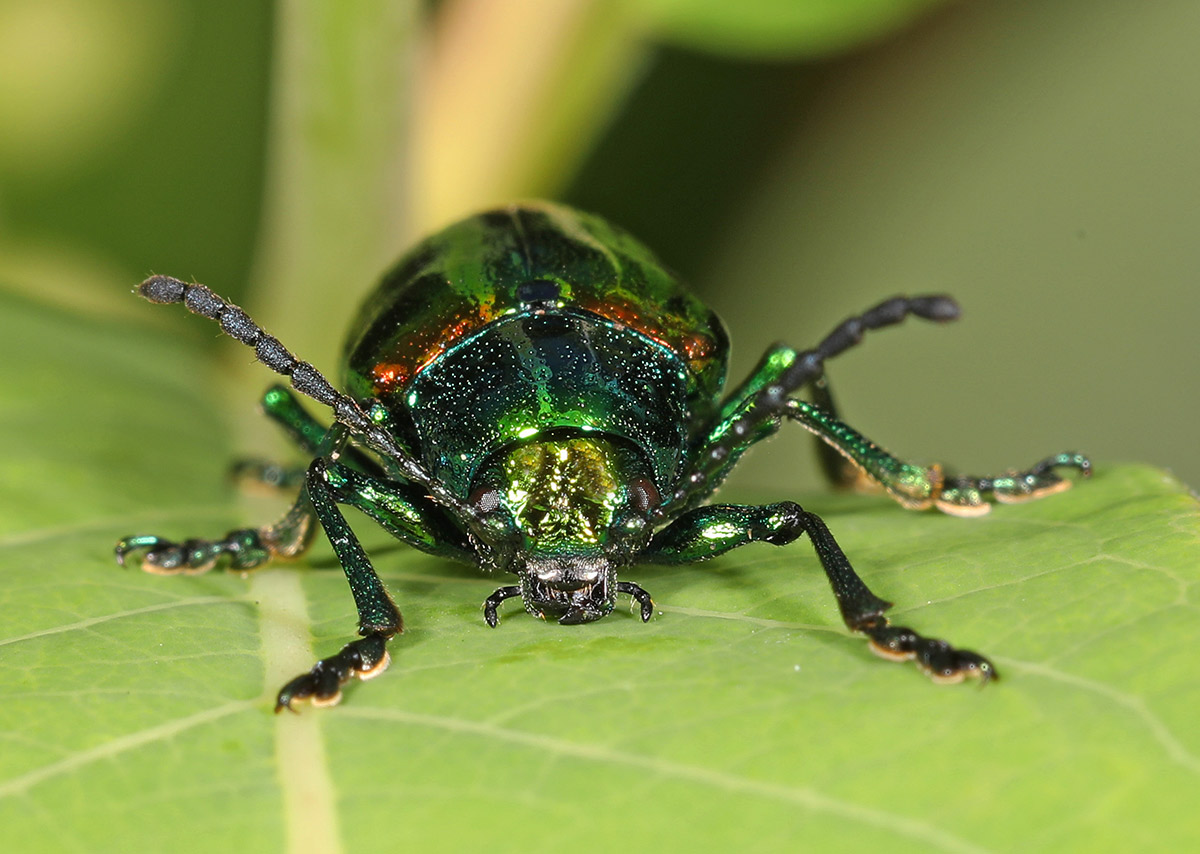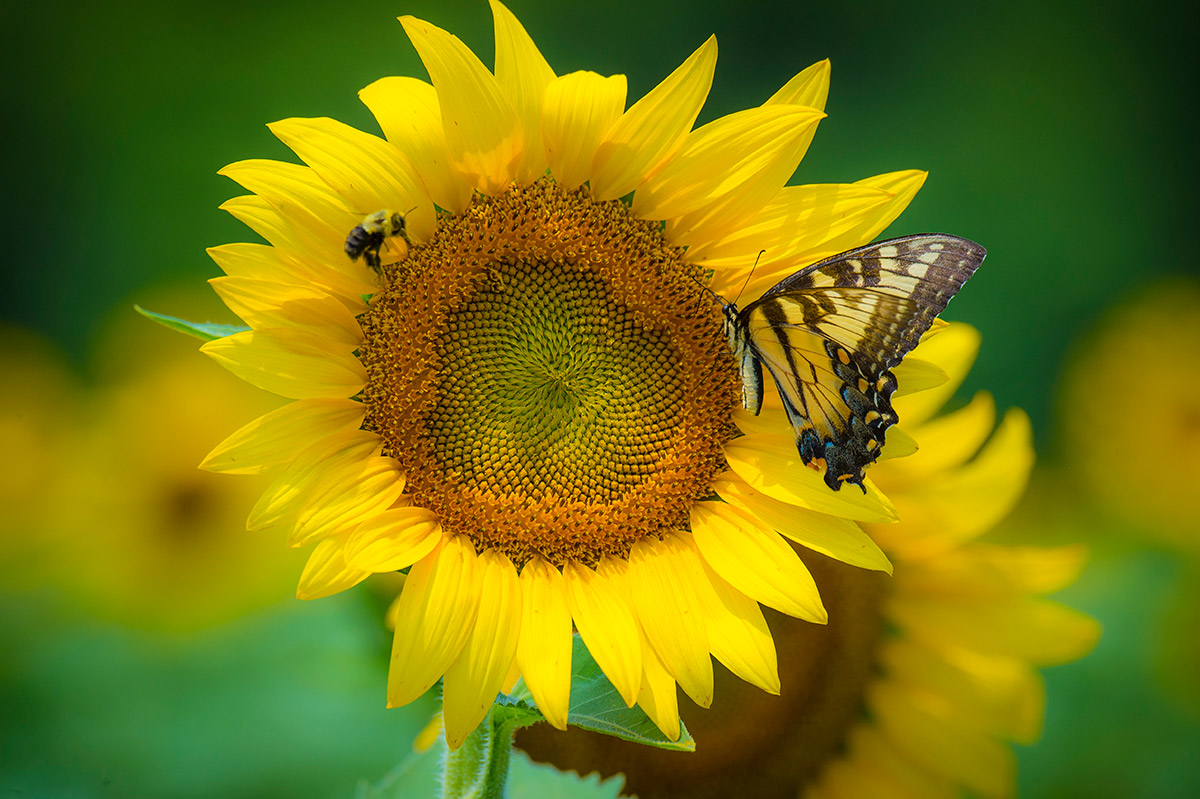Earth Week is a time to celebrate the things that make this planet home: a protective atmosphere that provides breath and warmth, the enormous good luck of a planet with water, green plants that convert energy from the sun into food we can use, and everywhere, everywhere, the ceaseless busy work of invertebrates. These cleaning, filtering, burrowing, pollinating creatures are the tiny engineers that keep Earth as we know it humming along.
If there is a downside of being a relatively large animal with few natural predators and the ability to change our surroundings seemingly at a whim, it’s that we can easily miss seeing the world as it really is: a planet that belongs wholly, unmistakably, to insects. Consider the approximate numbers of known species:

The big vertebrates we are most familiar with – say, a dog, lizard, or giraffe – are relatively easy to see and understand, belonging to the 1% of known animals that have a spinal cord. Yet say “bee” and you may be referring to a group of more than 20,000 known species, each with a unique and indispensable role in keeping our planet green. Insects are a stunning 70 percent of known animal species, and just one phylogenetic order, beetles, make up a whopping quarter of known animals.
To help this many invertebrates, we need many advocates
This staggering abundance is precisely why our founder Bob Pyle called working for the Xerces Society “the biggest little job in the world.” Xerces has grown over 50 years to be the largest invertebrate conservation organization in the world, with 75 staff, yet that still leaves us working at a ratio of one staff member per 20,000 known invertebrate species.
If we change that ratio to include all 7.8 billion people on Earth, it becomes more comfortable: You could be working on teams of five people per invertebrate species. (Caveat: some of your teammates might be infants.)

This Earth Day, we can all build a buzz about insects
To leave this many animals off of our conservation radar would be a baffling oversight. Together, they perform the most critical services in our environment. It’s an oversight we are still working to change at Xerces, from ensuring that state policy recognizes insects as wildlife, to learning more about each unique species and their role in the world, to improving the quality of habitat restoration for pollinators.
Yet the person who really holds the power to put invertebrates in the spotlight is you! If you’re reading this, you’re part of a cohort of Xerces followers tens of thousands strong. One share at a time, you’ve been building a movement. Twenty-year Xerces veteran Matthew Shepherd has seen the change first-hand:
“When I first started working for Xerces on pollinator conservation in the late-90s, there were only a few people taking interest. Now, people from all walks of life want to do something to help bees: artists and craftspeople fabricate beautiful pieces for sale; chefs host pollinator-dependent meals; communities ban insecticides; individuals give up free time to search for rare bumble bee; millions of people create habitat – often quite literally in their backyards. A desire to protect bees and other pollinators is a movement that has swept the country.”
As you celebrate biodiversity and consider how you can help invertebrates this Earth Day, don’t overlook the simple power of inviting a friend or family member to join you. One person at a time, we are building a movement to protect Earth’s incredible, dazzling, hard-working, and priceless biodiversity.





